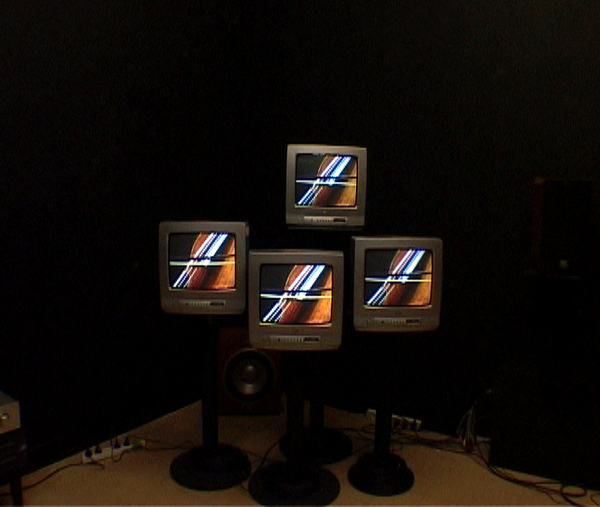
Schneckentempo - A Video Concert
4 channels video Installation
2007
Concept:
In the present project (Schneckentempo - A Video Concert) I am using classical materials, a filmed documentation of the rehearsals of the Israel’s Philharmonic Orchestra. I am deconstructing and reconstructing them in my own way (mainly by editing short pieces into loops and contructing them in layers). The digital editing and processing transforms the rehearsals into a new visual-musical work that is presented to the viewer via 4 television screens, located as an alternative to a human orchestra. The new piece is inspired by the traditional classical concert experience and is constructed from acoustic instruments. The two mediums, music and video, support each other so that a new and a special relationship develops between the sounds and the visual images. The orchestration exists also between the monitors that function as musicians in a quartet.
The viewers don’t experience the acoustic sound as produced by man, but are exposed to digitalized and manipulated materials which are presented through monitors and sound systems. In the classical concert the musician produces acoustic sounds through instruments which are manufactured according to a long lasting tradition. In contrast, in the video concert the images are only representations that lose their concrete quality, and the sounds which are processed by a computer lose their authenticity. Nevertheless, the new sounds and compositions are real and perceptible and are mentally effective just like any sound manufactured by a conventional orchestra. This way, the composition echoes classical traditions with a feeling of alienation and the feeling of loss as well.
The camera that documents the live musicians playing during the concert rehearsals is static, so that the frame is set and only the musical instruments and musicians are moving. The camera sets the bounds of the compositions and the musicians set the movement in space. As a result the viewer’s experience is one of harmony between the movement in the frame and the sounds played at the same moment. However, the sound that is recorded by the camera is the sound constructed by the sum of the sounds from all the playing instruments at the same moments and background sounds as well. The visual correlation between the images and the sounds is a result of the use of looping.
In addition, in the rehearsal there’s a mood of practice, forgivingness toward mistakes and lack of control. As a result of this atmosphere, sounds that were not produced by the instruments are added to the recording (for example, a screech of a chair, talking, the instructions of the conductor etc..). In contrast to classical performence all of those noises and exessive sounds are desired components in the video concert.